Now, Jo'burg is a little far from where I come from so I am going to show you pictures from this book...
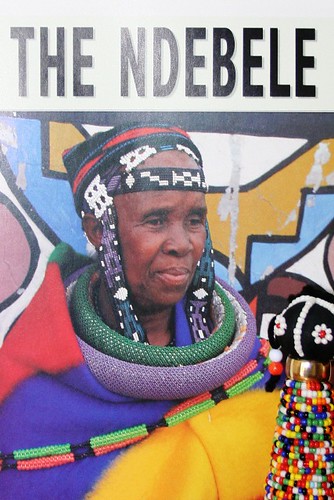
My people have a long history in this country. We originally broke off from the Nguni (Zulu speaking) people in Kwa Zulu Natal and moved further inland to the Northern part of South Africa (we are also known as the Southern Ndebele, as a further group broke off from us and moved further North into Zimbabwe)
The orange square on this map shows the geographical area where we isNdebele are to be found - to the North of Pretoria in the Northern Province (now known as Limpopo). Johannesburg is in the extreme bottom left.
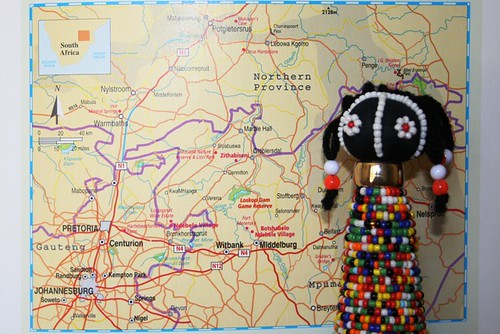
South Africa has eleven official languages. Ndebele, spoken by 2% of the population, is the smallest of the indigenous languages. But as it is an Nguni language it is understood by many other people, most notably the isiZulu, isiXhosa and siSwati.
Although the languages may be similar you will never mistake an Ndebele for any other tribe once you see them!
We isiNdebele are very well known for our artistic abilities. Our houses are decorated with very distinct geometric patterns. These are painted freehand, with no previous thought out plans. Only the women do art work.
Usually, only the front of the house is colourfully decorated, as this is the first view a visitor will see. Windows and doorways are of particular importance to us.
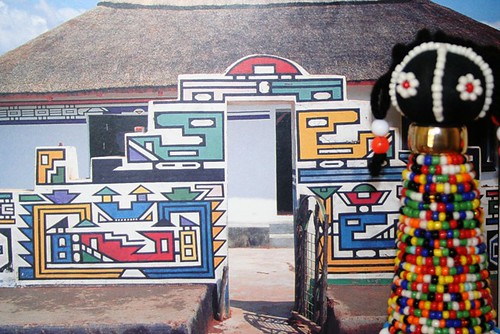
The back and the side walls are plastered with cow dung and patterns made by scratching fingers through it. This is known as kghuphu but is also called 'tyre tracks'!
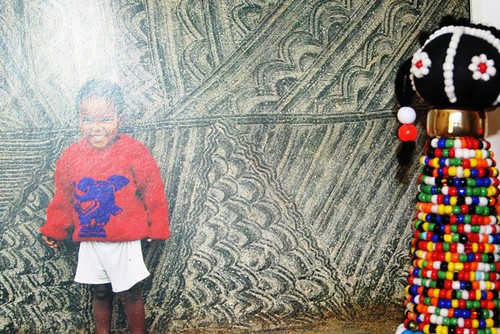
Sometimes the interior of the house is also decorated. It is hard to tell in this picture, but the seating is incorporated into the wall, it is a ledge that goes round the house. The 'cupboards' are also built into the wall.
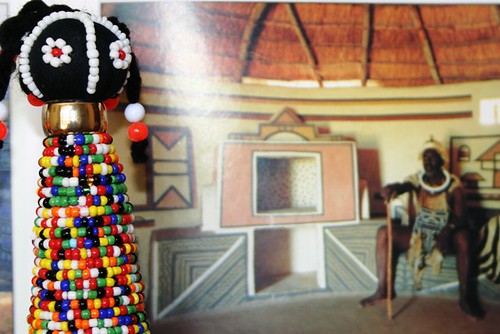
Meals are cooked outside in a large three legged pot over a fire. Our staple diet is a maize (corn) meal porridge called iphutu. Sometimes we add meat and vegetables to it.

We have a very distinct traditional costume - a very colourful one!
Most Ndebele men wear westernized clothing, but when they do wear traditional dress it is very plain and simple. We women on the other hand, are very proud of our beautiful colourful appearance and our clothing indicates both age and social standing.
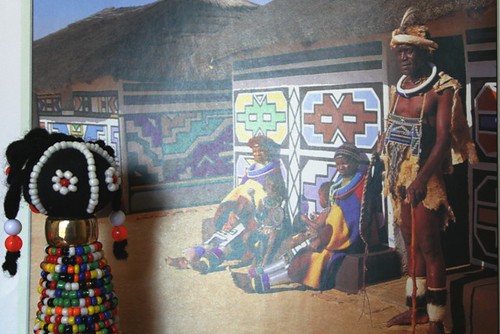
Little girls wear an apron made of thick cords, as they get older the aprons become larger until they are of a marriageable age. We then undergo an initiation ceremony and our dress changes completely.
The initiation process (iqhude)is as follows:
It starts at full moon, the girl is removed from her home, stripped naked and her hair and eyebrows are shaved off and she is placed in seclusion for a month (traditionally - 3 months, but this is no longer practical.) She is looked after by the older women of the community and taught to be a home maker and matriarch.
At the end of this period, there is a 'coming out' ceremony, with much celebration. The girls wear a lot of thick beaded bracelets around their arms, waists and legs and a stiff beaded apron that their mothers have made for them.

It is unusual for unmarried women to cover their breasts, but sometimes they wear a decorated breastplate.
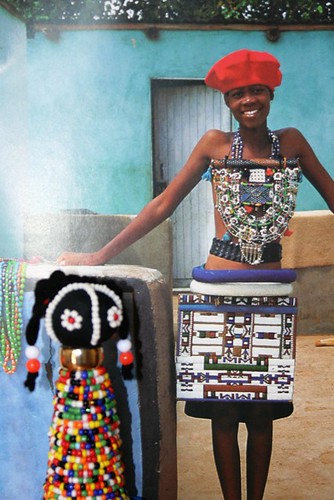
Once a woman has been chosen as a bride there are a lot of complicated arrangements made between the two families and the bride- to- be wears outfits that symbolise these arrangements. She is only married after the birth of the first child.
The mother of the groom gets to wear a linga koba or 'long tears' The beads of the head dress symbolise her joy at his return from initiation (which is quite gruelling and includes circumcision) and her sorrow at losing him as a child.

Once married, we cover our breasts with a blanket around our shoulders and wear Isigolwani (a thick heavy loop of twisted grass that is beaded) or dzilla (a copper or brass ring). Both are worn around the neck and sometimes on arms and legs.
The dzilla are ONLY worn by married women, and they are given to us by our husbands. Superstition does not allow the rings to be removed, as it may incur the wrath of the ancestors.
We Ndebele are polygamous. The man can take as many wives as he can afford. The first wife lives in the largest main house. Each successive wife gets a smaller inter leading house. The husband not only rules over all the wives and children, but also any wives and children of his sons that live under his roof too. Once he dies, he STILL rules as an ancestor!
If we ever get sick, we go to see either an nyanga or a sangoma. We believe that illness is not only physical but that it has a spiritual or mental dimension that only a medicine man or woman can divine.
The isiNyanga are herbalists and are exclusively male. They wear necklaces which have magic powers and charms.

The iZangoma are mostly women, they throw and interpret bones to communicate with the ancestors, they may also use herbal remedies.

We Ndebele are synonymous with beadwork. Colourful glass beads replaced our original beads when the Europeans first settled here and traded with us. Lately, with the increase of poverty we have turned to using plastic beads. We also reuse beads from older items that are no longer needed.

Here you can see the traditional beaded goat skin apron of an Ndebele child, a traditional fertility symbol, just behind me is a traditional doll and to the left are some more modern Ndebele dolls - not quite as cute as me!

Another craft we are famous for, but which is sadly a dying art, is weaving. We make mats from dried grass and weave intricate coloured patterns into them to express our creativity. Traditionally these mats were used for sleeping on but we now use beds like everybody else.
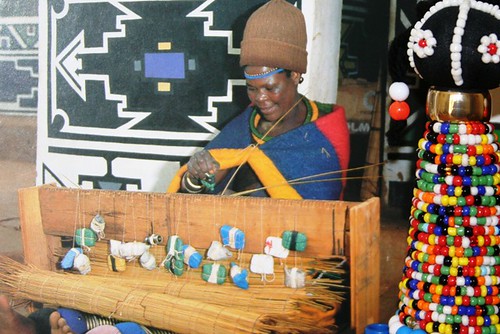
The isigolwani that we wear are also made from dried grass. It is quite a process. The grass is wound into a thick hoop that is then bound with strong cotton. Strings of beads are threaded on, one tiny bead at a time, and then wound around the hoop. It is the placed in a pot of boiling sugar water, which causes it to harden from the inside. It is then soaked in a syrup and left in the sun (but turned regularly) for two days. They are then washed and are ready to be worn.
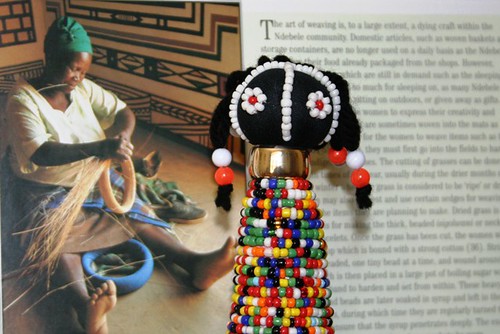
And there you have it, all about me and my fellow isiNdebele.



